#there's this one picture of a wood nuthatch i found where it looks like it's strutting proudly down a tree and it looks amazing best pic ev
Explore tagged Tumblr posts
Note
hiii if you're still looking for birds, consider: wood nuthatch. my favorite little guy. their special thing is the ability to walk down the tree trunk head first :3c

hiiiiii this bird is so cool i love it!!! i was initially gonna draw him hanging upside down from bread bridge, but i suddenly started missing boatem so <3
#hermitcraft#hc s8#boatem#grian#pearlescentmoon#mumbo jumbo#impulsesv#there's this one picture of a wood nuthatch i found where it looks like it's strutting proudly down a tree and it looks amazing best pic ev#they are so small and round. truly what one might call a Little Fella#my art#askbox#knifebun#we love drawing ms paint level backgrounds in this house#goodtimeswithscar#requests
958 notes
·
View notes
Text
Exercise Fic Recs 18
I am honestly surprised how much I have been reading. Holy Moly.
look how sweet life has become by susiecarter (Superbat, WIP (but will probably be finished tonight). A six plus one fic for Clark Kent week. Slice of life and very sweet 💗)
The Power of Family and This Stalker I Found by JackHawksmoor (Batfam, WIP. An AU were Bruce found Jason after he was resurrected, and Tim joins the family. Also, Tim knows about them being vigilantes, but the fam doesn’t know that he knows, so shenanigans ensue.)
Everything Will Be Just Fine by lonelynpc (Batfam, WIP. More goth dad Battinson)
always an angel never a god by Arwriter (Batfam, complete. Trigger warning for suicide attempt. Jason gets hurt, and Bruce talks to him about his concerns. Much hurt/comfort ensue.)
Unbelievable by BoredomBeckons (Superbat? Kinda? They are at least good friends :) Complete. Bruce’s persona is a bit too good. Clark thinks Batman is joking when he tells him his secret identity. Shenanigans ensue.)
WE’LL SWIM WITH THE CURRENT. by orpheusaki (Batfam, complete. Mermaid AU. Bruce carries baby mermaid Jason. It’s super adorable.)
Giant of the Waves by supermanstoddlerleash (Superbat, complete. Mermaid AU. Bruce goes to visit his boyfriend, who happens to be a giant fuck off mermaid shark 💖)
Action and Re-Action by Mithen (Superbat, Complete. A retelling of Bruce meeting Clark.)
Dynasty of frauds by msOdds (Superbat, WIP. Omegaverse Injustice AU. Palace drama!!!! In Kandor!!!!)
the color violet by TheResurrectionist (Batfam, complete. Slice of life. From the point of view of a EMT. Newly warded (is that a word? it is now) Dick gets hurt, and New Dad Bruce deals with it.)
I was in a candy mood, so I got the snickers latte with my croissant.
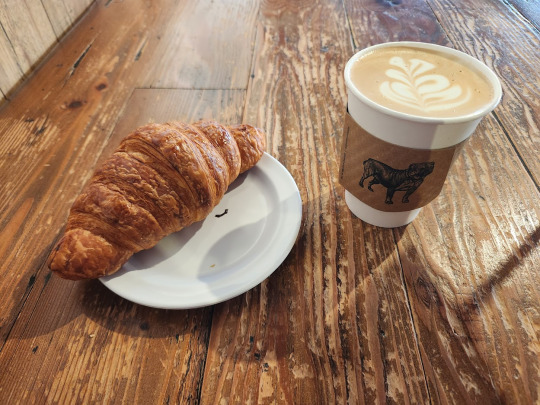
There is a pond next to were I work, and it is common for us employees to take a walk around it during lunch. I always see so many cool birds, and I’ve been itching to bring my nice camera there to get some good pictures. The only time I’ve willingly come to work on the weekend, and it’s for some birds, lol.
I FINALLY GOT A GOOD PICTURE OF A BLUE HERON!!!
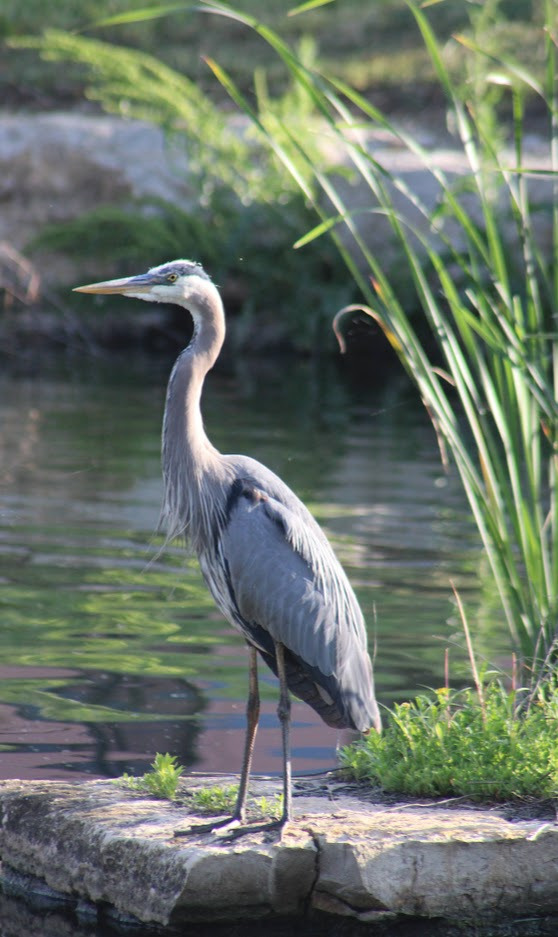
Also look at this little guy! A robin! And he caught himself some breakfast!!

The whole geese family!!

BABIES
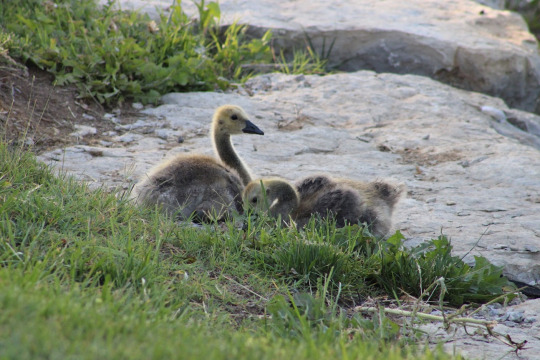
MORE BABIES
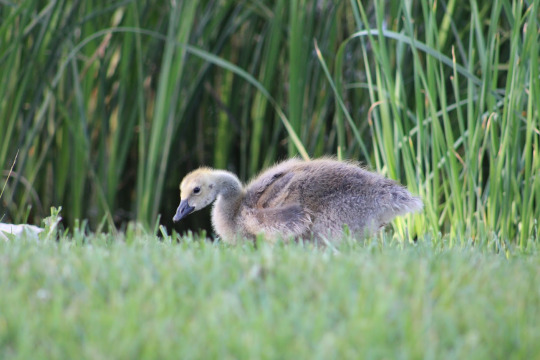
I’VE BEEN DETECTED
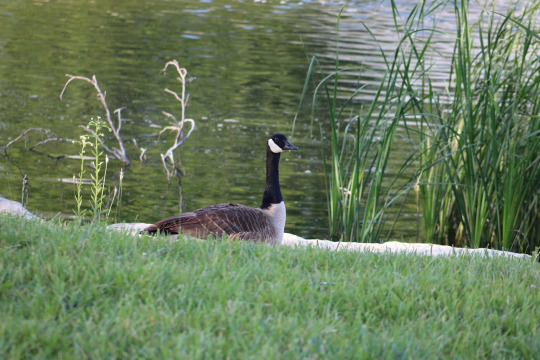
Grackle!

Green Heron! I’ve only ever seen the big blue guy, so it was excited to see this little green guy!
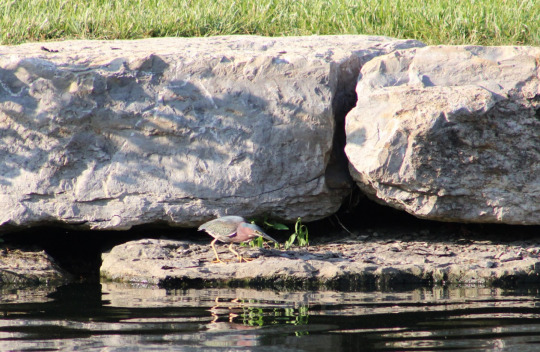
I was so excited when I got this picture, because I only see them when they’re flying! It’s a barn swallow! For a while, I couldn’t figure out what kind of swallow where flying around the ponds. I thought they were probably barn swallows because of the red bellies and necks, so I’m super happy I got this picture to confirm my suspicions!

I also saw some new birds at the arboretum, along with the usual suspects :)
A male and female wood duck:

I had no idea what this guy was until I got home to examine the pictures, but it’s a yellow-billed cuckoo!
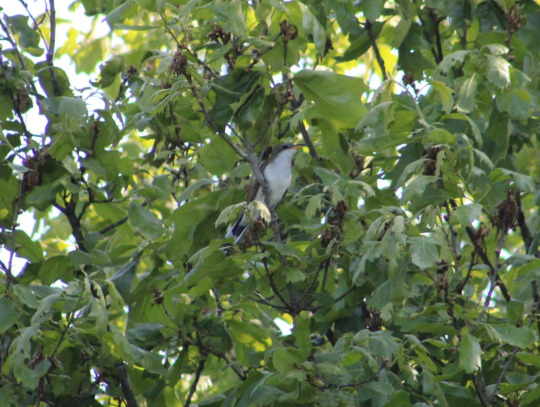
A red-bellied woodpecker:
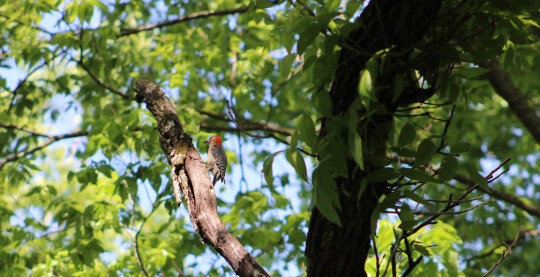
I crossed paths with another birder when I was walking, and he let me know that there was an owl in the area I was coming up to! I was so happy I was able to spot him. A barred owl:

I have been trying to get a picture of this little guy for a while. An Acadian flycatcher:

PHOTOGRAPHER SPOTTED. AGAIN.

Tree swallow!
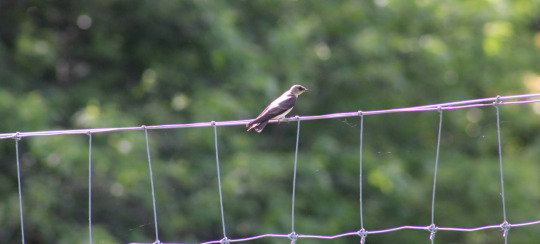
a cute little white-breasted nuthatch!
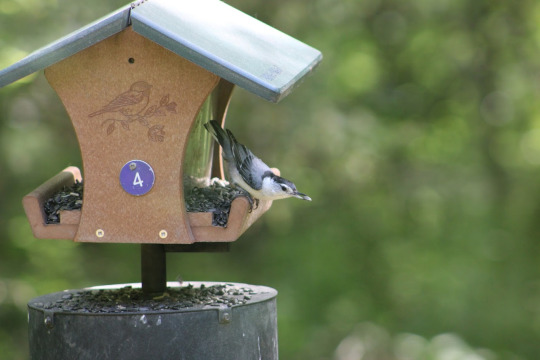
A BEEEEEEEE:

I just really like this view:
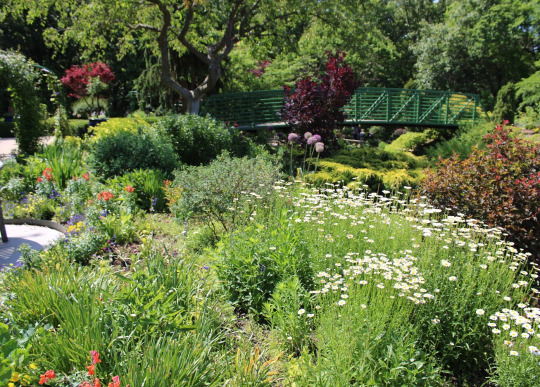
Pretty flowers!
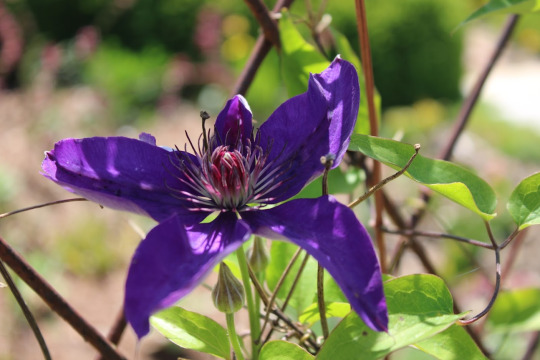

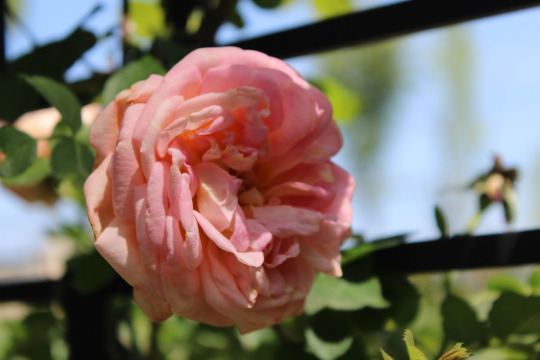
Lily pads!
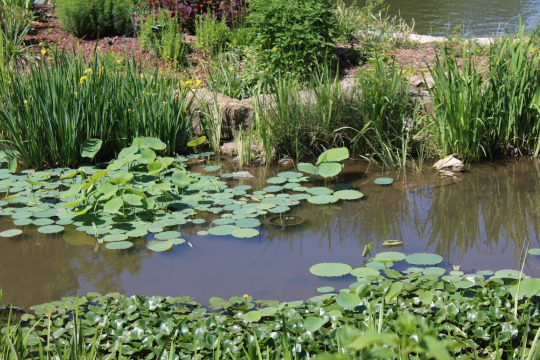
More flowers!
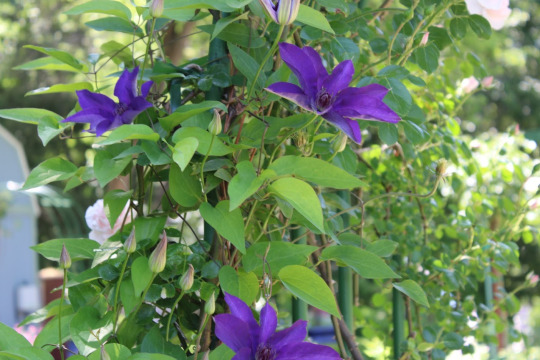
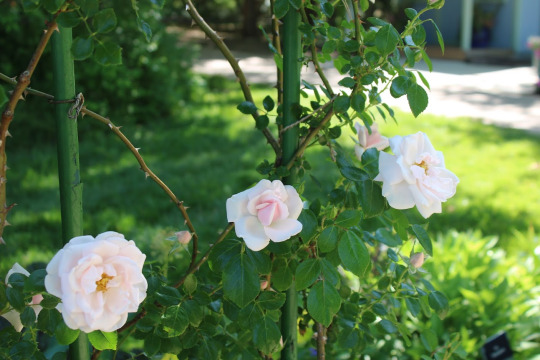

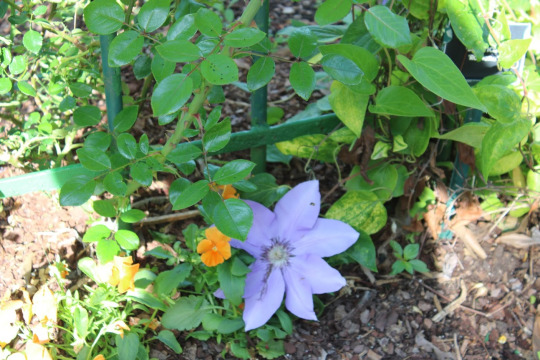
I also have tomorrow off because of the holidays, so don’t be surprised if you see another post from me with more birds!
#adventures in exercising#superbat#batfam#batman#fic recs#latte#croissant#the great outdoors#birding#great blue heron#american robin#canadian geese#goslings#grackle#green heron#barn swallow#wood duck#yellow-billed cuckoo#red-bellied woodpecker#barred owl#acadian flycatcher#tree swallow#white-breasted nuthatch#bee#BEEEEEEEEEEEEEEES#pretty flowers#ficrec
33 notes
·
View notes
Photo
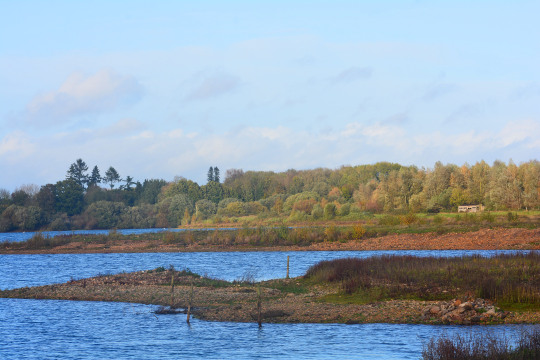
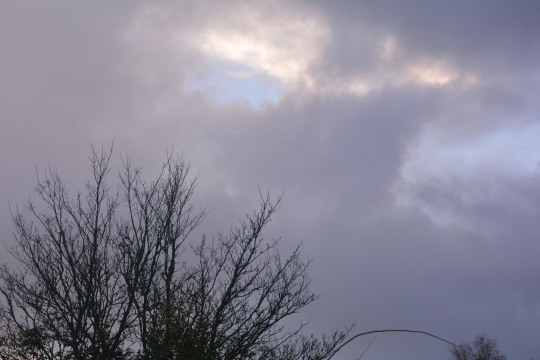
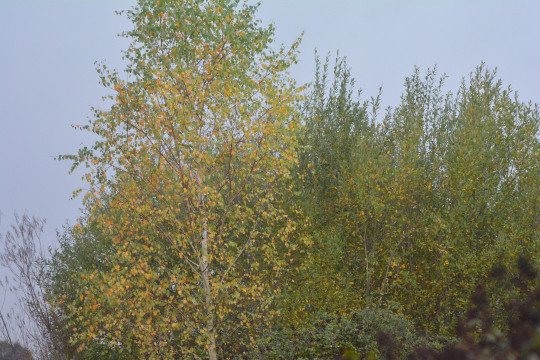
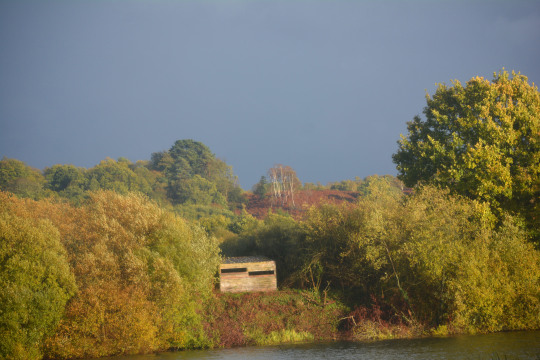
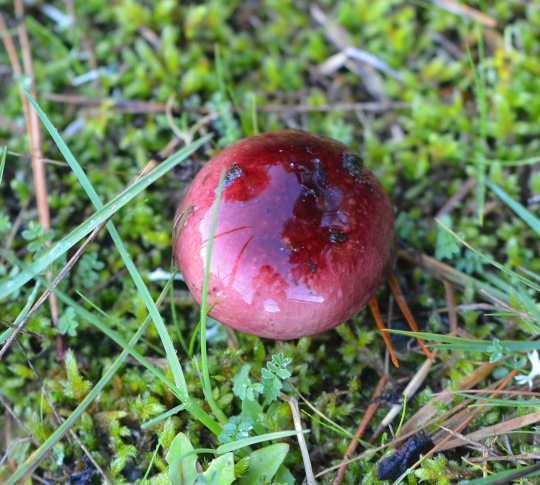
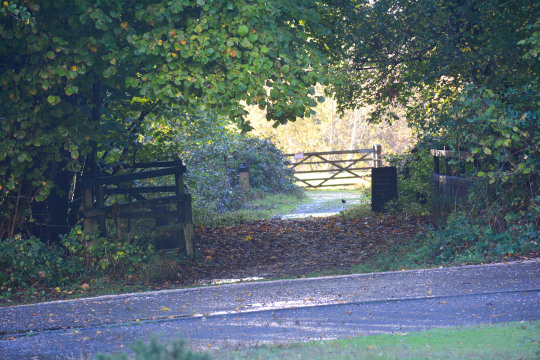
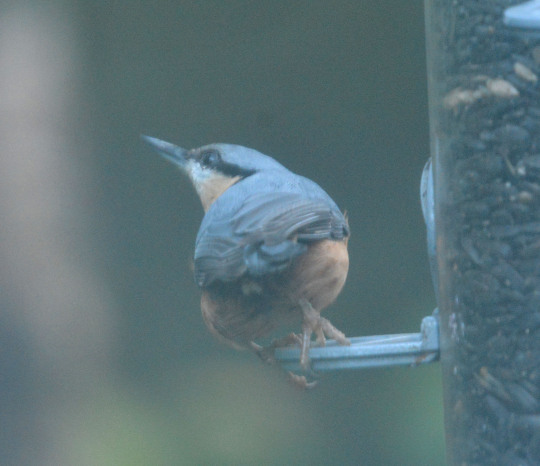
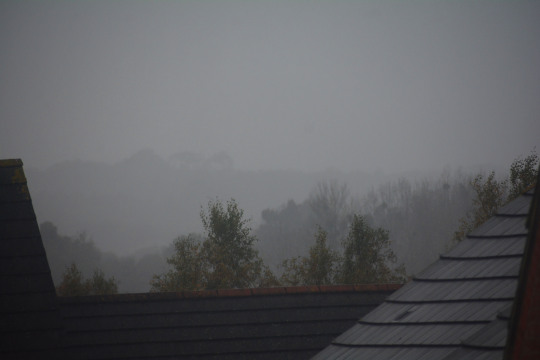
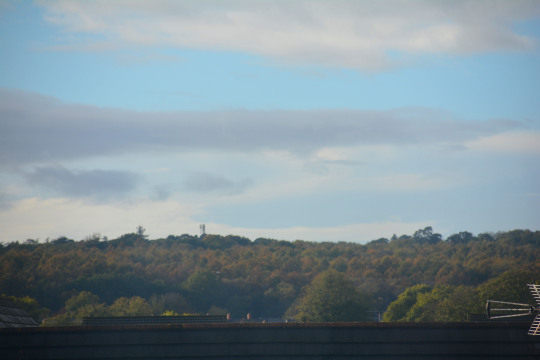
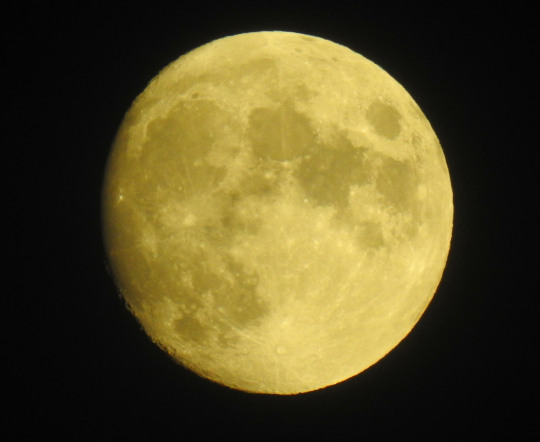
06/11/2022-Blashford Lakes and bits at home
I had a good afternoons birdwatching at Blashford. In terms of water birds it was nice to see many Great Crested Grebes especially on Ibsley Water. It was also good to see many Cormorants well this afternoon, as dusk started to approach on Ivy lake seen from Ivy South hide I liked seeing them gathered in the trees, with the call of two as they tustled echoing towards me it was pleasantly reminiscent of a seabird colony. It was sensual to see and hear one flapping on Ibsley Water from the tern hide earlier in the visit too. From Ivy North hide Wigeon’s bright colours glowed like perfectly painted cabinet ornaments in the murk of a rain shower.
Also over Ibsley Water a Red Kite soaring nicely showing its immense scale above a couple of flying Grey Herons stood out for the day. The best of the rest included a Jay in a golden birch, another Nuthatch seen well in the New Forest area lately after two weeks ago at Denny Wood with a lovely one feeding for ages at the woodland hide I took the seventh picture in this photoset of this and a great view of a Dunnock by the Ivy North.
I found some top bits of fungi between the entrance to the centre side of the reserve and Ivy North; a massive one, an entertainingly shaped one and a little brown button like one on the ground which I took the fifth picture in this photoset of a brittlegill I believe. It was great to take in much lichen here this afternoon in the field area, as well as ivy seen from the woodland hide, ragwort holding on in the field and remnants of another yellow flower a hawksbeard I believe. It was good to see rose hips and remnants of blackberries too.
Landscape wise it was so beautiful to witness the force of nature of the shower moving through at Ivy North. Dramatic when raging, then the green vegetation I had been attracted to during it got brighter and brighter as the sun emerged. With black clouds shuffling off into the distance towards Rockford Common which had its still quite purple heath revealed in the sun that followed as the fourth picture I took today in this photoset shows, a rainbow formed. Nearly a double the second didn’t quite make it, but the one that did come through was perhaps the brightest and clearest I’ve seen all year. A stunning colourful sight to behold I was transfixed by it. I tweeted photos I took of it on Dans_Pictures tonight. I don’t think I know of a place to watch and photograph rainbows better than Blashford Lakes, there always seems a potency about them here which I’ve enjoyed a few times over the years. In the midst of the shower where the autumnal colour was harder to discern, but for the weather and bare branches it didn’t feel too November like with how much green there is on the trees still. Wet autumn and green leaves in bright sunlight made great sights as the woods awoke from the shower the sun coming through and behind trees were enriching sights today. I enjoyed views of many different trees including pine, blue lakes and precious reedbeds, as well as smashing sky scenes here today. I took the first picture in this photoset of a view from the Tern hide, second of a sky scene, third of a colourful birch and sixth picture in this photoset of a view here today.
Such sky scenes enthused me at home today too and there was one heavy shower from there too. Seeing groundsel and captivating pink wet snapdragons in nice light outside the fence and House Sparrow and Starlings feeding as well as Collared Dove were good moments at home today too. I liked seeing the moon really well tonight again it looked beautiful. I took the eighth picture in this photoset during the shower with the mistletoe on distant trees looking clear and it was an atmospheric scene, ninth of a sky scene out the back with bits of autumnal colour in a view over the area that way starting to show and tenth and final picture in this photoset of the moon tonight. It was strange to see a Mute Swan beside the road and nice to see a few Carrion Crows on the way home from Blashford. A great and memorable weekend, I hope you all have a good week.
Wildlife Sightings Summary: Three of my favourite birds the Jay, Red Kite and Great Crested Grebe, Woodpigeon, Great Tit with one heard nicely in the woods too, Coal Tit, Chaffinch, Goldfinch, Nuthatch, Dunnock, Robin, Blackbird, a possible Redwing, Cormorant, Grey Heron, Black-headed Gull, Lesser Black-backed Gull, a nice selection of ducks Mallard, Tufted Duck, Wigeon and Gadwall, Mute Swan, Canada Goose, Greylag Goose I heard these from home today too, Coot, Moorhen, Grey Squirrel seen from the woodland hide and fly.
#fly#grey squirrel#moorhen#coot#canada goose#mute swan#gadwall#wigeon#tufted duck#mallard#lesser black-backed gull#gulls#ducks#black-headed gull#grey heron#cormorant#blackbird#robin#dunnock#nuthatch#goldfinch#chaffinch#coal tit#great tit#woodpigeon#great crested grebe#red kite#jay#photography#birdwatching
4 notes
·
View notes
Text
Sunday 10th January 2021
Garden Watch
I know we’re in strong lockdown but even so, I have to admit we’re doing nothing at the moment. Yesterday was mostly watching the birds outside the kitchen window, watching TV, football and cooking (see below) Today it’s groundhog day, but let’s hope the football is of better quality than last night.
We woke to an even harder frost than yesterday. Boy it’s cold -


and so we knew it was going to be a busy day making sure the birds had plenty of fresh water and food. Up to now, keeping the water going has been a pretty constant task of boiling the kettle and the food’s going down a storm as well. I’d guesstimate that there are 10-35 birds here at any one time all day so far.
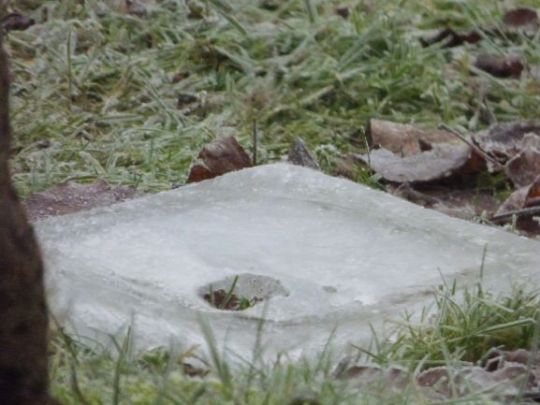
The ice block isn’t melting at all

We supplemented the seed and fat balls with finely chopped apple and some dried fruit. I’ve got some unsalted nuts from the baking cupboard and some of those might have found their way out too.

Perhaps we should’ve thawed out the Guard Lamb, but he’s still fulfilling a purpose for some.
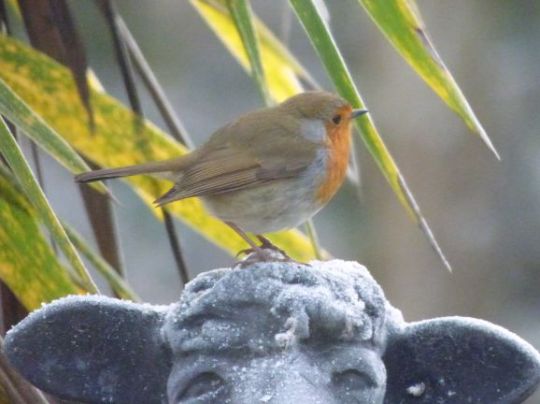
I hope it’s going to be as busy as this when we do the Great Garden Birdwatch at the end of the month, because I can hardly take my eyes off the view today.

We’ve got all shapes and sizes and they all come dine together. Picture, yesterday
We’ve had flocks of Sparrows here constantly. I got up to 26 at one time before I lost count. So far they’ve been here at least 9am-3pm and no sign of them stopping any time soon and they’re like locusts the way they’re stuffing themselves.

There have been Dunnocks, one of which got into a spat with a Robin and triumphed. The Robins are part of an unofficial study between me and the Guru. I’m documenting three Robins who are currently getting along together ok for the time being. In fact, yesterday afternoon I just missed getting four red breasts at the same time in one photograph. There have been at least two here at all times today.

Although it’s not a clear photo, I wanted to include the quick picture I grabbed
When I first mentioned how close they get to each other, Guru found it hard to accept, but it’s been a while now. There’s surely going to be a point when the Robins become aggressively territorial, so we’re keeping a note of how things progress between them. Other birds seem to be ambling around in pairs all of a sudden. Magpies and Wood Pigeons in particular and there’s a bit of strutting about between some of them, you know the kind of thing. The Magpies are being a lot more visible but have been spending a lot of time flying through the garden and haven’t called by for any food today.
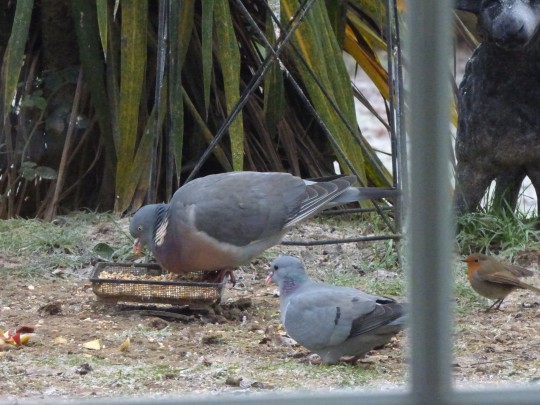
The Great Spotted Woodpecker, Blue, Great and Marsh/Coal Tits are here and there are more Wood Pigeons, Stock Doves and Blackbirds. Nuthatch is backwards and forwards constantly like the Woodies, but I’ve only spotted the odd occasional Chaffinch this past couple of days and there have been far less Starlings than usual.


Yesterday and today we’ve had a Pied Wagtail visiting. I don’t know why it is, but despite seeing a flock of them across the field, they always appear as a single in the garden.
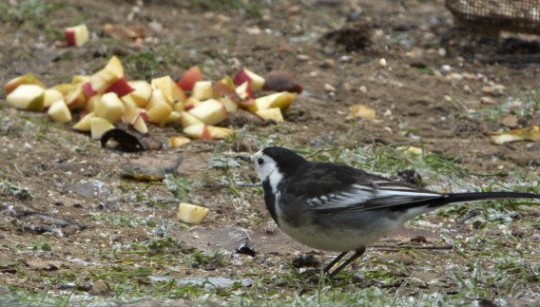
The Long Tailed Tits haven’t been around the garden quite as much either, but they have stopped by.
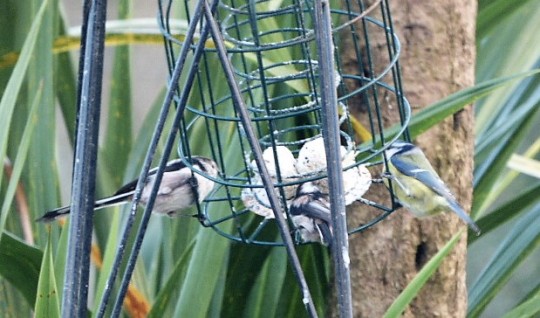
NOTE FROM THE GARDEN:
Little Christmas Tree is doing ok back outdoors and inspired by an item on TV that showed how some people are now renting their trees (they’re delivered to you, collected after Christmas and looked after until next time) we have given Little Tree a proper name. One of the people interviewed referred to their tree as Woody. We’ve gone for the slightly more adventurous Bruce. I would say Bruce the Spruce, but the truth is we employed dramatic licence, It made us laugh because we hark back decades to an old TV advert of an Aussie guy ringing home and repeating over and over ‘It’s yer son, Bruce’ I think it might have been a Fosters ad? They were quite creative and humorous at the time, but I suppose you had to see them to follow our vibe.
Maybe we should’ve gone female and very northern and called it ‘Clur’(sic) as in Clur the Fir...I’ll wait/

‘Bruce’ is looking healthy again after his sojourn indoors
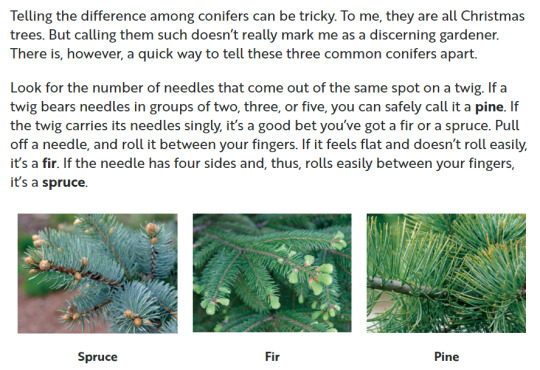
Article from Fine Gardening magazine on line
NOTES FROM THE KITCHEN:
What else can you have for breakfast in weather like this except porridge? Made with all milk today, with some grated coconut, sliced banana and granola on top. It’s certainly stoked us up.
My baking yesterday has had a slightly mixed result. I tried Florentines. My baking tray needs to be bigger as they expanded rather more than anticipated and where the edges became thin are somewhat on the crisp side. The middles have that nice chew and they taste good though, I shall just have to warn Crow to mind his teeth in parts!
Update - Florentines have been sampled with a mug of tea and declared very good indeed. Phew! The bigger ones were better.
What Did I Learn Today:
Today I learned that you can waste an awful lot of time watching what you might call ‘trash TV’ I stumbled across Married at First Sight Australia and was hooked!
Ooops. I’m blaming lockdown: don’t judge me
0 notes
Text
I love red squirrels, they are so much fun to watch as they dart, bounce and jump through tree canopies and undergrowth. Such inquisitive little creatures that make me smile. I can spend hours watching and photographing them, and seek the squirrels out whenever possible. In this blog I will share some of my favourite locations for photographing them (as well as a few others with potential) and include a handful of images from each to show what the location is like for photography. I’ll write about free, wildlife membership and pay to hire hides. Obviously this is just the tip of the red squirrel iceberg, and if you have any places you go to in Scotland to photograph them please do add in the comments below.
A few photography tips based on my experiences.
Unless it’s specifically stated that you shouldn’t feed them, or if you’re going to a paid photo hide, always take nuts, preferably hazelnuts with you. A nut cracker is useful too as the squirrels will often take whole nuts and stash for later so unshelled nuts are more likely to be eaten in situ, (although they are more often than not stolen by birds!) so you have more time for photographs.
Red squirrels are speedy wee creatures, and the majority of places you’re likely to find them are quite shady due to the trees. This makes it difficult to use a high enough shutter speed for moving squirrels, unless you push the ISO up very high and/or have a fast lens (although then you have the challenge of a shallow depth of field). It’s therefore best in these conditions to concentrate on photographs of them when relatively static – this is true for photographing any bird/animal in low light, a very useful tip I was given a couple of years back. Being curious animals, they will often pause to check you out, and of course stop to munch on nuts so have the camera ready.
Try and photograph them away from feeders (same for birds) and if possible attempt at least a few images where they don’t have a nut in their mouth or front paws – not the easiest thing to do at times!
If you’d like jumping squirrels then you’re best to go to a professional photography hide which has a set-up for this. Neil MacIntyre‘s hide (see below) is great. For a face on jump you need to use manual focus and set halfway across the jump, and high speed continuous and then press the shutter as soon as the squirrels about to jump. Hopefully then one at least is in focus. Best to use a cable release or wireless remote. High shutter speed essential, so pump up the ISO and try for an aperture at around 7.1 or 8 to increase depth of field.
FREE LOCATIONS/RESERVES
I’ll start with the free (or voluntary contribution) locations I enjoy visiting, beginning with the wonderful Eskrigg Nature Reserve on the outskirts of Lockerbie. Not the easiest reserve to find, you won’t stumble upon it by accident, but google can help! There’s a red squirrel hide and nut feeders as well as a large number of bird feeders here, aside from the reds you will be unlucky not to spot a nuthatch or great spotted woodpecker as well as all the regular little birds. Sparrowhawks (I haven’t seen one here) are often sighted as are treecreepers and goldcrest (I’ve seen both) and there’s a pond with ducks, swans and apparently, on occasion kingfisher. There are a lot of red squirrels here, but I’ve found on some occasions they don’t come down regularly – I’ve had 4 or 5 at one time or, rare visits from a single animal. Early morning is good. Light isn’t bad as it’s at the edge of woodland, although it’s not bright by any means. I tend not to use the hide, but sit on the boarding next to it so I can get down to eye-level with the squirrels. Many are very tame, and will come within touching distance, often far too close to focus on. My camera/lens choices here are Nikon D500 + Tamron 150-600mm for more distant squirrels and the birds, and my Nikon D610 with Tokina 100mm macro, for those much closer animals – you really need a short lens here and a fast one with large aperture very helpful too! A mobile phone camera/video is great too. The volunteers who run the reserve prefer that folk don’t feed the squirrels but do allow photographers to place some nuts in photogenic spots, but the hazelnuts should be shelled first. I’ve written a blog about Eskrigg, so do check that out if interested. Also, in the same part of the world, and discussed below, is the Scottish Photography Hides sparrowhawk hide which also has visits from red squirrels.
A site I visited for the first time in December 2018 is Carnie Woods on the outskirts of Aberdeen. It’s a small area of woodland, but because the red squirrels have been fed here there are far more than could live without human assistance, therefore there’s a very high chance of spotting a few especially if you go to the feeding station within the wood. I loved this place, only downside really was the huge number of dogs walked there – an endless stream of them running around and frightening off the squirrels. The squirrels were even tamer than at Eskrigg and I often looked down and found one attempting to steal nuts from the bag at my feet – so don’t leave your belongings unguarded especially if there’s anything they might like to eat/steal inside! There are a couple of fallen logs and I was placing nuts midway along one of them, and photographing them running along towards me. Only problem was there’s a plank attached to this log which isn’t great for photographs. I never managed to get them to run along the other, more photogenic log. Fab place though and definitely worth a visit if you’re in or near Aberdeen. I wish it was closer to Glasgow! Any short to mid-length lens will do here. I mostly used the Tokina 100mm macro with both my cameras, but did have a longer lens on the other body. I spotted treecreepers and goldcrest in the woods en route to the feeders.
Aberfoyle – there are red squirrels throughout Loch Lomond and the Trossachs, but a good place to stand a chance of seeing them is at the David Marshall Lodge wildlife hide. Not brilliant for photographs as the undergrowth is quite high and the squirrels tend to go to the feeders, plus it’s a bit on the dark side and the squirrels aren’t too close so the best compromise between long lens and large aperture is best. Also visited by lots of families with loud excited children and dogs and there’s a zip wire close by so lots of screaming and not the most peaceful of locations. If you wander around near the hide though you might find a more photogenic spot and can maybe attract some with nuts. I had success with this on one occasion.
Taken from the wildlife hide
Photographed in the woods behind the hide
Buchanty Spout, Perthshire – I visited this area to try and photograph the jumping salmon on the River Almond, but they chose not to travel upstream that day. Very pretty spot though especially in the autumn. If you cross over the river to the side furthest from the carpark, there’s a walk along the riverbank. I saw 4 red squirrels here. A bit of patience, fieldcraft, long lens and nuts might be required to get close to them though. I had the wrong lens, as I’d come for the salmon, so struggled to photograph one sitting at the top of a tree, which is a shame as they’d have been quite interesting pictures.
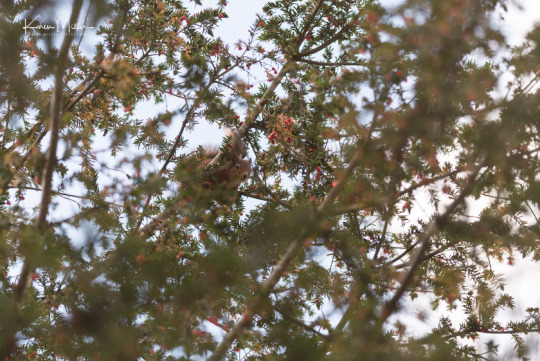
Morton Lochs – I confess I haven’t actually seen any red squirrels here, but I’ve only been once and it was a bitterly cold November day and the whole place was frozen. I have however seen many photographs of the squirrels which frequent a hide next to the carpark. Nice location, possible to get good photographs and you don’t need a long lens – all I saw was this little vole. Also known for kingfisher sightings if you go to the hide by the loch (it was frozen solid on my visit so not a lot to see there either).
Loch an Eilein on the Rothiemurchus Estate near Aviemore is one of many places in that area you can spot red squirrels. The Loch is gorgeous and is surrounded by the remnants of the old Caledonian pine forest. Read on to find out about a fantastic, pay to rent, hide here, but you can spot squirrels at the feeders in the carpark opposite the hut where you pay to park (you do have to pay to park), and also down towards the loch itself. Early morning is best to see them and it’s not that easy to get close, but worth trying for the stunning location.
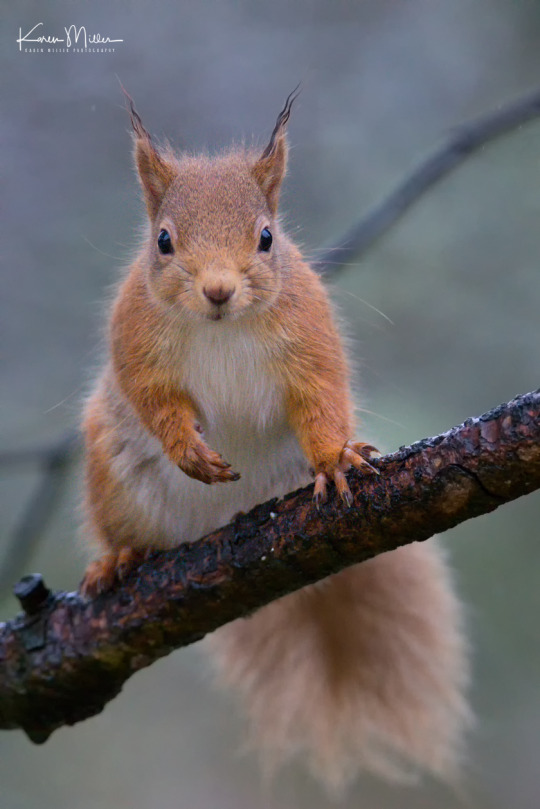
photographed at the feeders by the pay booth – torrential rain, so lovely to see one!
Other places I haven’t checked out but am aware of are Cluny House in Fife and the feeding station at the outskirts of Boat of Garten. In fact there are quite a lot of places near Aviemore. Note – the excellent Inshriach Nursery in the highlands has now shut, so no more gorgeous cake whilst watching the squirrels…
PAY TO ENTER (FREE FOR MEMBERS) WILDLIFE RESERVES
Many of the wildlife organisations have red squirrels visiting their sites. The best I’ve found of these is RSPB Loch Leven. Entry is £5 for non-members, free if a member. Squirrels are located behind the visitor centre, by a small hide designed to encourage children to watch wildlife. This whole bit of the reserve is full of bird feeders and therefore squirrels can be sighted anywhere but this area by the wee hide has the most light and a nice photogenic log which has good dips for hazelnuts. I had to wait awhile, maybe because the feeders were pretty empty as it was 2nd Jan so the centre had been closed for a couple of days, but eventually I was visited by at least three individuals who returned again and again once they discovered my hazelnuts. I wasn’t able to put out unshelled nuts though because the birds instantly stole them! Whenever the nuts ran out, the squirrels would approach me and let it be known they’d like some more. Although the reserve was busy very few people came near this bit, so I mostly had the squirrels to myself. Any lens will do here. I used the D500/Tamron combination, but mostly at the short focal length (200-300mm). Sit opposite the fallen log and you’ll get some nice shots, but look behind and to the sides as well as the squirrels will sneak up on you!
Loch of the Lowes (Scottish Wildlife Trust – members get in free) by Dunkeld is best known for its ospreys, but there are red squirrels visiting the feeders outside the visitor centre. They do apparently have a small pop-up hide that can be rented too. Not the best for photography as you’re sitting behind (clean) class, but lovely to sit in the warmth of the centre watching them and the many varieties of birds that come for a snack. I don’t have any red squirrel photographs from here though as they were always sat at a feeder…
PAID PHOTOGRAPHY HIDES
These are obviously by far and away the most expensive option, but they have been set up with photography in mind so can be a good choice.
My favourite by far of these is Neil MacIntyre‘s hide situated deep within the Caledonian pine forest on the Rothiemurchus Estate. As I mentioned above you can see squirrels around the estate, but here you’re pretty much guaranteed some wonderful sightings in the most picturesque setting I’ve ever been to. Almost every keen photographer has visited this hide so you’ll see photographs from it all over social media. I’ve been twice, once in August when the heather was in full bloom which was stunning, and again in March when there was a light dusting of snow. Being in the middle of a forest the light can be challenging and it’s good to take a long, fast lens. But because the setting is gorgeous, it’s a great place for wide-angle photographs too. I used 3 different lenses here with my 2 cameras (Nikon D500 and Nikon D610) – Tamron 150-600mm, Nikkor 300mm F4 (with 1.4 t/c) and Nikkor 70-200mm f2.8 for the wide angle photographs. Neil has a couple of jumps set up as well. Large hide and Neil provides hot drinks and a few extra hazelnuts. This hide is bookable for morning or afternoon. Shared with others. Neil also has a great book on red squirrels with some fabulous photographs. I have two blogs about this hide – August 2017, March 2018.
Alan McFadyen’s (Scottish Photography Hides) sparrowhawk hide in Dumfries & Galloway is visited by red squirrels. This site is mostly man-made and in a clearing so the light is good, but only works for close-ups of the perches. You’ll hopefully also see the aforementioned sparrowhawks and lots of little birds, so it makes for a good day out. I used my Nikon D500 with Nikkor 300mm F4 here but had the Tamron 150-600 on my other camera body for the more distant photos. This is a day rate hide, you may have to share with a few others. This is my blog about my day here.
Bob Smith’s Nature Nuts hide in Perthshire, near(ish) to Blairgowrie sees regular visits from a number of red squirrels. The light can be poor but they come close to the hide and there’s plenty of other action here too including almost daily visits from pine martens. I’ve enjoyed both my days here. Medium length lens best, again, fast if possible. You park right next to it though, so bring everything with you. No space for tripods, bring a beanbag. Day rate hide, stay as late as you can to see the pine martens. Bob also does beaver tours. Blog featuring the red squirrels (and pine martens)
Argaty Farm, best known as a red kite feeding station now has a wildlife hide on the edge of a piece of woodland. I was there the week after it opened and I think it was still a bit of a work-in-progress but I’ve seen some great photos from there since. This hide is unique to all the others I’ve visited in that it has viewing windows at ground level so you can (if not too tall, or if on your own) lie on the floor and take eye-level images. Again, light was challenging, and it was a sunny day in June, so take medium length lenses with large aperture. I used my Nikkor 70-200mm F2.8 until it broke… Featured in this blog.
That’s the hides I’ve had the pleasure of visiting. There are a few others I know I can recommend, even without having been there myself – Andy Howard‘s hide near Inverness – he has some fantastic flying squirrel and backlit squirrels (sometimes both of those in one image!). Loch Visions have a hilltop hide in Argyll, South of Oban that I intend to visit this year as it looks quite unique. If you’re thinking of a week at the wonderful Aigas Field Centre near Beauly, then they now have red squirrels and a hide (plus a pine marten hide, and beavers). Fab place, but the squirrels have returned since I was last there.
So, I hope this is of some assistance if you’re in or visiting Scotland and hoping to see red squirrels. I know there are tonnes of other places, so please do add your recommendations in the comments section below.
Also, it’s worth looking at the Saving Scotland’s Red Squirrels website where people can report sightings (and please report any of your own sightings) and you can see them all on a map.
New blog - places I love to visit to photograph #redsquirrels in Scotland @RedSquirrelsUtd @brsquirrel @BBCSpringwatch @ScotWildlife @ScotsMagazine @RSPBScotland @ScotSquirrels @NeilMcIntyre3 @RSPBLochLeven @WoodlandTrust I love red squirrels, they are so much fun to watch as they dart, bounce and jump through tree canopies and undergrowth.
#animals#blog#nature#Photography#photography locations#photography tips#Red Squirrels#redsquirrel#scotland#squirrel#tips and tricks#where to photograph red squirrels#Wildlife
0 notes
Text
Our little house on the northern prairie is in a place with a high water table. We live in the aspen parkland zone near the 51st parallel. Aspen parkland is a narrow strip of transition between boreal forest and the three prairie zones, tall grass, mixed grass and short grass. Because it is a transition zone it, we have many plants from both boreal forest and prairie. In our specific area, we have mostly boreal and tall grass prairie plants but we are also blessed with some medium grass plants. The parkland is an area rich in diversity. We have so many different birds nesting right around our yard that I can’t name them all. I will try. The types of birds I see in my yard every single day are ruby throated hummingbirds, robins, mourning doves, Baltimore orioles, cedar wax wings, American goldfinch, purple martins, wood, barn and cliff/mud swallows, nuthatches, juncos, chickadees, three kinds of kinglets, common red polls, pine siskins, yellow bellied sap suckers, northern flickers, downy woodpeckers, blue jays, marsh and house wrens, about 15 different little brown sparrow types birds I can’t identify, and often overhead, riding the thermals, sandhill cranes and pelicans. They arrive to enjoy the vast abundance of insects, seeds and nectar our nearby wetlands and wildflowers produce. Many are featured in this delightful blog.
When we first moved into our little house, we were confronted with a real eye sore. Our sump pump drains at least once a day, and in spring or periods of heavy rain it can kick in as often as once an hour. It pumps out about 20 litres of water each time. The result was an ugly brown bare place where nothing grew. It showed up as a sunken, slimy pest hole beyond out deck. I went looking for pictures of it and I found I have very few pictures because it was so ugly and embarrassing that I mostly took pictures around it. In addition to this bare ugly eyesore is a low ditch that drains rainwater from our typical three day prairie monsoon rains. Years ago someone tried to plant cypress trees but they are long dead, drowned, and one sickly potentilla bush struggles to survive in the muck.

The ugly bare spot and the ditch that is perpetually wet are visible in the background of this picture where I am showing off garden.
With so much to be done getting the neglected old house in proper shape, I just ignored that ugly spot as much as I could. One day, my husband noticed life in the muck. We had a stroke of inspiration. You can’t beat nature. She is far too powerful and she always wins. You can take advantage of her though, if you are willing to work cooperatively. And so we decided to create a pond.

In this view you can see potentilla in the foreground, a dead cypress tree and the bare ground eroded out by constant flooding from the sump pump hose coming out of the house at the front of the deck.

My husband noticed life in the small temporary pond created by the sump pump drain.

Our first step was to try to disguise the ugly drain pipes with something useful and so we planted a raspberry cane near the deck. This is raspberry starter cane in the first year.

By the second season the raspberry cane was taking off and spreading just as hoped it would.
The water did not hang around if the input was low. It would drain off, soaking the gravel/sand in the scouring area. The grass would start to creep in only to be washed away as soon as the next heavy rain took place. While we were out shopping for other things, we found a pond liner under-pad on sale for next to nothing so we grabbed it. We ordered a proper pond liner of the correct size from Amazon. It would precisely fit and go over the scoured out area.
It was lot of digging. Anyone who visited ended up doing some digging. Over the course of the second summer we got the pond dug out to our satisfaction. We made many trips to collect suitable pretty local rocks to prevent the liner from moving. We felt like we were getting somewhere by the end of the summer. The pond liner stopped the scouring. The water from he sump pump is ground water and therefore hard, but rainwater from the roof is collected and sent via another pipe into the same area. The pond has an overflow channel that directs water into the low ditch. This keeps the water level in the pond constant. The pond is maintained by the sump pump drainage and is regularly flushed out by rainfall off the roof. We had a stable pond! On our regular walks we began searching for native plants with appealing shapes and forms.


We soon found ourselves with a lush growth of algae. Yuck! We began bringing home buckets of local pond denizens, snails, beetles, water striders and the like to try to control the algae. We soon had a marvellous flourishing of pond life. We worried about mosquito larvae but a few passing dragon flies ended that issue and we now grow dragon fly larvae in abundance. These ferocious hunters live as the apex predators of our pond ecosystem. Several of the water plants ‘took’ an we soon had lily pads, bullrushes and sedges in pots.

The drainage from the overflow ended up creating a constant wet zone in the nearby ditch. We decided to extend the pond area to have a wet meadow in the ditch. A wet meadow would be lot easier to maintain than a wet soggy ditch that is often impossible to mow. So we began looking for plants that inhabit areas that are soaking wet in spring and subject to flooding, but dry up in late summer. We transplanted individual plants and collected seeds. It has been a labour of love. Each year we see small improvements in our pond and wet meadow garden as lawn is replaced by local native plants. Because they are native plants, once established they need no care. This spring we were positively delighted and astounded to discover native orchids like our wet meadow. I moved the grass around and found these lovely late yellow lady slippers (Cypripedium parviflorum).

We have stopped mowing the drainage ditch/wet meadow. It’s pretty messy yet but you can see a flash of yellow among the dandelions going to seed marking our lovely orchid. And we found this. I think it might be a showy lady slipper orchid. If it is, we will have two spectacular native wild orchids growing in our wet meadow. It will be years of tending before our pond and wet meadow look exactly like the ponds and wet meadows of the surrounding area. It will take time and persistence to get rid of the lawn grass and the other nonnative plants. But they really have no chance to compete when people aren’t helping them. And so we are hopeful. And we will have less lawn to mow.

Possible Showy Lady Slipper?
Our Pond and Wet Meadow Our little house on the northern prairie is in a place with a high water table. We live in the aspen parkland zone near the 51st parallel.
0 notes
Text
How do you write everything? How could you sum up the breadth of experience in one fell swoop? How can you pass on what it's like in the moments before dark, hurling down the highway in a metal can with rubber wheels, paying heed to nothing in particular, when the sky in front of you explodes in liquid color, every hue of orange and pink and red and purple the the mind will allow? Can you really explain the sight of such a thing? How it takes your breath away and leaves you in a twisted heap of nothingness out by the forest road? How it unhinges you and sends you careening foolishly out of orbit, like an astronaut untethered out in empty space, knowing that such a view will never be seen in such a way ever again? Most forms of art attempt this careless undertaking: to somehow against all odds capture the essence of a thing, to attempt pinning down that by which definition must remain elusive. Sometimes art tries to replicate the world outside, tries to mirror the world around it, or frame it in a way that provokes thought. But the great art, the stuff that moves me, is the art that leaves me gutted by its immensity, by the bigness of the questions it makes me ask or the longings it stirs up, desires deeper than I knew I could go. But can you write everything? Dylan says the answer is blowing in the wind, and Rothko drove himself mad trying to transmit form, space, and color. Mostly, in the ten days since the eclipse, I've read Annie Dillard and watched birds or played guitar, stringing together campsites in Tennessee and the Carolinas. Birds are decent company, but Dillard is where it's at. Here, she captures the total eclipse experience much better than I tried to last week: "Seeing this black body was like seeing a mushroom cloud. The meaning of the sight overwhelmed its fascination. It obliterated meaning itself. If you were to glance out one day and see a row of mushroom clouds rising on the horizon, you would know at once that what you were seeing, remarkable as it was, was intrinsically not worth remarking. No use running to tell anyone. Significant as this dread sight was, it would not matter a whit. For what is significance? It is significance for people. No people; no significance." I've tried my hand at art. I've dabbled in music and writing and photography, in trying to share something of importance with people outside of my immediate circle, but really in all these things I'm an amateur, a hobbyist, one singular phytoplankton bobbing through a droplet of all the art the world has ever known, with the world itself, in all its forms, the accumulation of oceans, seas, rivers, and lakes. But what did it look like, when the first ray of sunlight came over the horizon, the first time someone realized that they were racing towards an exploding star? In high school my sisters and I would sit out on the trampoline into the night and bounce questions around like bingo numbers, pulling ideas into focus and then tossing them back. Part of my religiosity during those years was due to Christianity's attempt to answer why we ended up here in the first place and what were supposed to do about it; while I don't believe or practice anymore, I still think the best forms of religion seek to wrestle with these questions as opposed to administering prescriptions. But there it is again; how can the marsh be such a color of green? Why does blurring your eyes in a forest at dusk look the same as the vast emptiness of a West Texas sky? Or how can owls fly so silently when ravens whoosh like vacuum cleaners? How hot is it there in the middle of that fire, right there where it's white and blue? Is that color, there in the fire, the same as the sound at the beginning of the universe? These are the questions I can't possibly answer, but I want to try to ask. These are the people I'm drawn to. ----- Two days ago I watched a looper climb an invisible rope up into the canopy. I lay down on the picnic table and used my binoculars as the inchworm wound the invisible rope up into a ball, writhing and contorting himself like an epileptic in a fit. When I first noticed him (and because my morning hikes have been a cautious and ceaseless exercise in attempting to avoid web to the face or an accidental spider breakfast), I at first thought he was caught in a spider's lattice and trying to escape the inevitable by thrashing his way free. His precarious position, between nothingness and seeming nothingness, was in fact defensively strategic. Loopers sense vibrations as they're feeding, and merely being a worm and thereby one of the forests chief protein sources, they are equipped with what can be seen as either a severe shortage, or a few surprising survival tactics; if the vibration signals bird, they often freeze, and hope that their camouflage provides them ample cover, but if the vibration signals predatory insect, the worm throws a silk line and abandons ship, using a longer silk line if it senses a wasp and a shorter one if stinkbug. I watched him climb all the way to the top. He'd pause every so often, presumably to rest, but that is a human assumption. I'm not certain if his task was as arduous as it seemed from my supine vantage point. I thought of Alex Honnold free-climbing El Capitan, and wondered if that was somehow comparable - the inchworm ascending something near 250 times his own body length, in the course of 20/30 minutes. Or maybe this was more akin to an evening commute, the long drive back to the suburbs after a day at the office, a rote task performed simply because the day was nearing completion. Certain wasps have learned that inchworms use this evasive maneuver and have adapted to scour the foliage and find the silken thread, pulling the hapless looper up like a trout at the end of a hungry fisherman's hook. ----- In the waning years of graduate school, my friends and I would don goggles and scour the crystal clear waters of the San Marcos, searching for salamanders and sunfish among the rocks and aquatic wild rice or hunting the invasive suckerfish with spears. When the water level was flowing low enough, I could muster enough courage to explore below the waterfall below Spring Lake, the river's headwaters. I remember John, my roommate at the time, swimming beneath an underwater chandelier made of moving crystal that was ever-changing. I remember the still water beneath it and how the fish were unperturbed by the currents above, how the water down below was calm blue, but how the surface foamed white and would sweep you back downriver. I remember taking it all in until we couldn't hold our breath any longer, until we were forced to admit that this world was not for us, that we were merely visitors, intruders in a place where the magic was beyond our grasp. I remember how John, too, even after he died, held his own magic, in the way that each of us holds our own magic. If only we'll let the sun wake us up, if only we'll unhinge ourselves enough to swim and dance and run with a child's abandon. If only we'll make the climb. ----- The forest is a dizzying place. Growing and dying all in one breath. The geometry is all wrong. We walk along the ground of the forest, but the real action is vertically oriented. The White Breasted Nuthatch scampers up and down trunks looking for easy meals. Squirrels chatter and squabble across highways from tree to tree. Cicadas climb up to shed their skin and mate. I tried to calculate the amount of surface area that exists above the forest floor by laying there in my hammock and imagining a 25ft section of forest laid down and flattened out, every leaf and branch and trunk of every tree in that small section of woods; what goes up and down dwarfs what can cover the ground. Everything green or brown racing towards light. A twist here because a larger tree blocked the way. The fallen warriors who grew taller than their canopy could afford, and the starting gun that their toppling signals for every smaller sapling hoping to fulfill a grander vision. Fall webworms make dirty silken tents where they live and feed and defecate and molt through their various instars on their way to becoming a white moth. Each branch or twig, previously laden with leaves but covered with the caterpillars' silk, takes on the resemblance of a ghastly circus tent, a mummified freak show of wriggling, living, hairy animals with decayed leaves and pieces of the webworm's previous instars strewn through the webbing like floating skulls and withered apparitions. I poked the tent with my knife and watched them squirm over strands away from the opening, deeper into the dragon's lair. The tent itself is visually similar to that of the tent caterpillar, which is in fact, also a moth, but who emerges in early spring and seems to be the cleaner of the two pests, using their tents more like a home, which they build with various rooms that the morning sun warms to varying degrees, insulating them and helping them digest their food, which they cannot do unless it's warm enough. Some researchers have noted a 54 degree difference between the inside of a tent and the forest air surrounding it. Tent caterpillars, as opposed to fall webworms, leave their tent for feeding, excreting pheromone trails behind them like ants to let the other caterpillars know when the good grazing has been found. Because they merely eat the leaves, webworms and tent caterpillars don't do any damage to the trees outside of offending our expectations of what a good, honest tree is supposed to look like. It's impossible to be bored in the forest. It is quiet, and you can slow down to a crawl, but boredom won't find you. Stare at a phone all day, read the news and flip through pictures and articles and like people's posts, and boredom will come for you, an aggressive boredom, the kind that makes you want to toss the screen against the wall and yell "What am I even doing?" Lay in a hammock and look at trees all day and boredom won't find you. Instead you'll be dizzy. ----- Dillard writes that there are two types of waking up; one is like a photographer or painter paying attention to all the minutia of light and framing and subject, honing in on the world around them and examining with scrutiny every detail that can be absorbed. The other type of waking up occurs when you let go of thought entirely, when you step into the flow of the world around you, thoughtless and alert, empty and aware of anything but self - then, you'll awake to have your lungs sucked dry at the sight of an egret flying across a blue sky. When you find someone who wakes up everyday, stay near. ----- Today I'll meet up with Alexis, ending the solo part of my journey. The respite has been nice, albeit sometimes lonely, as solitude often is; however, I'm drawn to exploring new landscapes with this wonderful woman. There are new secrets the world waits to reveal, and old stories that conjure up deep magic. I remember climbing a hill with her and watching the Perseid rain stars down and how each burning rock opened a chasm in my soul, how the bigness of the sky was pierced by the intensity of each question we asked each other that night, how we pricked holes in the fabric of the universe. I remember so many things. Waking will help you remember. LIke the time we walked along the top of a plateau where Native Americans had written petroglyphs on the boulders and the sky held the smell of rain, and we looked for rocks to see if we could hear their stories. Or walking through the neighborhoods of Austin with the sky electric and lightning in our teeth. Now, we both sit on the edge of a transition. And these few months of travel are as much about looking closely as they are about letting go. And I feel incredibly fortunate to be able to walk into this next phase with trust and understanding, with someone whose capacity for beauty holds no limits. ----- Emerge from the forests to find the sky. See the swoop of brilliant white against the green of cord grass and how the blue of the channel is different from the blue of the sky. See how the sunset plays with the boundaries of physics and time, making the water a kaleidoscope snake, but wait, now it is an inky eel. Hear how the kingfisher chatters like the brash ruler he is and smell the morning dew on the Palmetto. Climb even though it is dangerous, even though you have no silken lifeline. Ask to be torn open like a new day, to be opened like a gift for a child, to be woke and woke again. And again.
0 notes
Photo
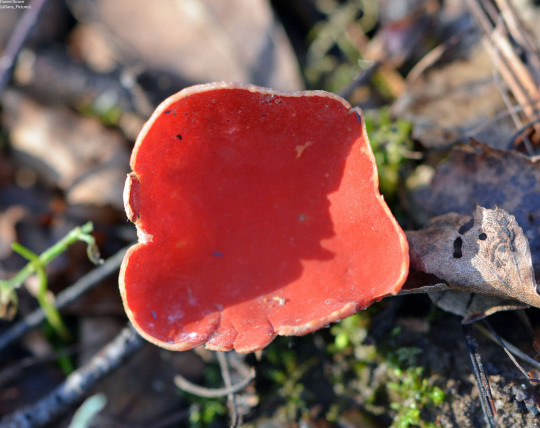


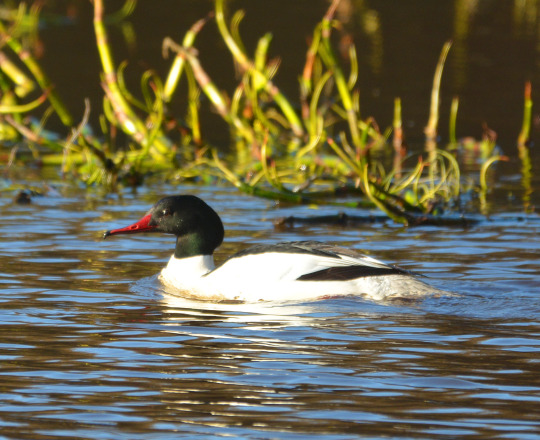
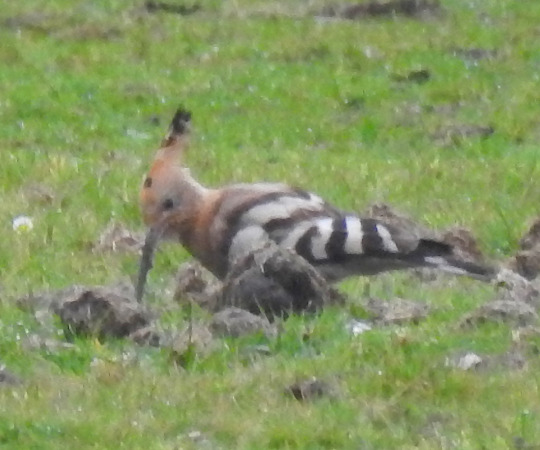



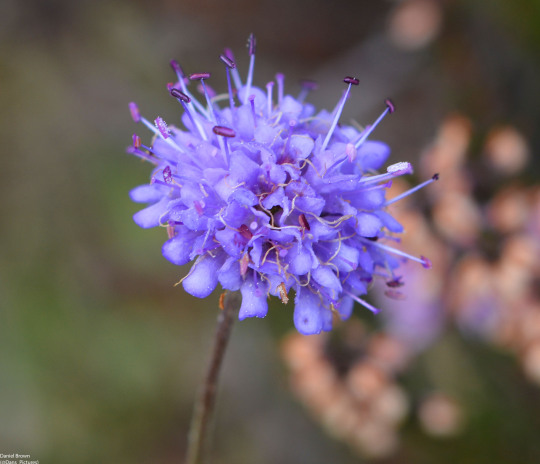
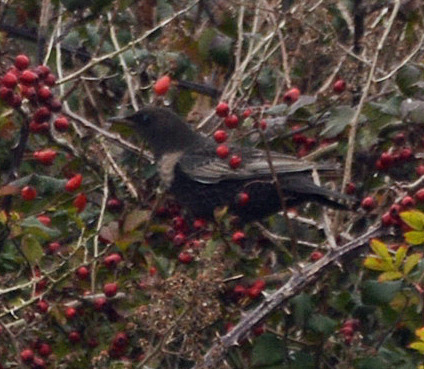
The third of my 10 wildlife/photography highlights of 2020 blogs: My year in the New Forest
I do this post every year now and as I felt it worked well last year I’m structuring this post like this again. I will roughly talk through notable New Forest walks and trips we had this year in chronological order, but then introduce thoughts about subsequent walks at the same place, a similar or nearby one or one that featured the same or similar wildlife next so it does flip around back and forth around the months a bit. It was another special and varied year visiting our beloved national park, even if coronavirus meant there was a hiatus where I really missed going to the forest during the first lockdown as has happened before for a different reason a long time ago for me.
It all started with an early winter visit to Denny Wood to help build my bird year list early on, for the first time since 2015 we didn’t visit here alongside Lakeside on New Year’s Day to see woodland species but still made it here early on and I had a little look at the heath between it and Shatterford on 3rd January. As well as taking in a really nice landscape as it got sunnier and sunnier that packed day for me I was happy to watch the feeding woodland birds spending precious moments with them seeing my first Marsh Tit, Coal Tit, Great Spotted Woodpecker, Dunnock, Nuthatch and Treecreeper of 2020, with my first Rook and Mistle Thrush of the year on the way driving in and on the way home nearby respectively.
Blashford Lakes was our location of choice on 4th January getting memorably lots of year ticks of bird species beginning with G. Standout birds I have seen at this rich reserve this year have included; Goosander, Goldeneye, Goldcrest, Great White Egret and Siskin. A standout visit to Blashford Lakes this year was my second of the year on 1st March which was one of my most special days of photography this year. I took some of my pictures I am most proud of this year as part of a high amount produced that day, including ones of a Robin one really closeup one that was one of my favourite ever pictures to take an early favourite of mine that I’d taken with my new camera that I got for Christmas, rainbows especially over Ibsley water, general landscapes, a Great Spotted Woodpecker one of my favourite birds and the nice bit of red fungi that there was so much of in the woods in the early days with my new macro lens which I got for my birthday shown in the first of my pictures in this photoset.
I had another strong year at other New Forest reserve Lymington-Keyhaven on the coast. Key species I saw there this year included; Kingfisher, Spotted Redshank, Spoonbill, Peregrine, Marsh Harrier, Slavonian Grebe, many Bar-tailed Godwits on multiple visits this quite special bird became a regular here this year I thought, Greenshank, Ruff, Knot, Whitethroat, Yellow Wagtail which I took the second picture in this photoset of at Pennington in early September, my first Sand Martin of the year in March and many more seen well in June, Common Tern seen fishing really closely that day too which was great, Little Tern, Sandwich Tern and Reed Warbler those three for the first time in 2020 on the same day on what was a memorable late spring return in May to here and the sea after two months away from this habitat during the first bit of the lockdown which was really a sweet and special day for us, Avocet, Shelducks and Little Ringed Plover well with offspring in the spring lovely to see in great numbers in some cases, Black-tailed Godwit, Eider Duck and the lovely Grey Phalarope and its rarer cousin the Wilson’s Phalarope on one amazing October day as I mentioned in my first highlights post. Many lovely Cetti’s Warblers’ calls heard here was great too and it was even delightful to see two Black Swans here in late January. The day I saw the lovely white headed Ruff and another later on stood out for visiting here in late February I saw the white headed and another Ruff there again in October in my best ever year of Ruffs generally this year as I took a large amount of photos and ones I was very proud of that stood out this year of flying Mute Swans, lovely sunny beautiful landscapes, Rock Pipit and more. I had an equally as high yielding photo day I was happy with on 5th September producing photos of Knot, the Yellow Wagtail, Mute Swan and Little Egret flying, young Shelduck, Turnstone up close, many landscapes, flowers and some autumnal sights which I liked a lot. I got a delightful moment on a June Pennington visit seeing two Mute Swans with eight cygnets my first seen anywhere this year cross the footpath and go down the bank into the sea to swim. I enjoyed seeing flowers such as sea aster at this reserve a lot this year too. I enjoyed other flowers at this reserve this year too including common toadflax and broad-leaved clover. On the way back from seeing those three species at Lymington on 31st October it was atmospheric and brilliant on Halloween to see a gigantic full moon in the sky over the lovely forest landscape on the way back.
Another really pivotal day in my year which I already mentioned in my bird highlights of the year blog was a January visit to the Whitefield Moor/Holmhill area of the New Forest as part of one of my biggest weekends of the year. The Great Grey Shrike was an absolutely rare and mega bird to see one that had been widely seen by many that winter and a largely reported bird in the forest it was true joy to finally see it after a few attempts, as was the Hen Harrier very likely the same bird that had been my 200th of 2019 here on my last day of birdwatching/photography that year. My all-important first Bullfinch of the year completed a golden hat trick of bird year ticks with my first Fallow Deers of the year seen from the car on the way in at a part of the forest and some seen on the walk, and I took once again so many photos and some I was so proud of. The weather was amazing and sunny and the day felt part of something important for me. The Great Grey Shrike was only my fourth ever time seeing one (all in the forest over the years) but I soon got my fifth as on a trip to Milkham in the New Forest in March we were surprised to see one far away fly high into a tree. It was a sensational sight and made me really happy after a quieter period of birdwatching when coronavirus uncertainty had just started to hit I could be seeing a really rare bird and one we’d sort of found too it was smashing. I took the third picture in this photoset of this bird. It was generally an amazing day at Milkham a real rising star of a New Forest location wildlife wise for us as we are starting to see so much there where I also got my first year tick of March seeing my first Crossibills of the year late on. A fantastic and classic woodland New Forest species always an important one for me to see in a year this was my sixth straight year list I recorded this species on which I liked. That day I also saw Hawfinches in woods near Broomy Walk on the walk, a Grey Wagtail unusually on the path and got great views of two of my favourite birds the Buzzard and Great Spotted Woodpecker. Like I said in my highlights post about my favourite birds generally this year I’ve had brilliant years for both these species. I also took many landscape pictures I was happy with that day. It was a classic New Forest day in rich and varied habitat it has so much of and with iconic forest species.
I had a sensational day back at the Whitefield Moor/Holmhill bog walk on 11th July right in the summer especially for insects. I saw my first Common Grayling of the year one of my favourite butterflies always a top one to see in a year and Common Darter dragonfly of the year that day. I also got cracking views of an Emperor dragonfly flying over a pool right beside us it was fantastic to see such an intimate moment, and I saw male and female Silver-studded Blues on the heath on a sunny and hot day two species I had an especially good year for. Butterfly wise I managed to submit some sightings to the Big Butterfly Count that day from a small patch of the walk. Large White 10, Silver-studded Blue 6, Peacock 3, Brimstone 2, Meadow Brown 2, Red Admiral 1 and Ringlet 1 were the results great to chart them at this location. There was also so many Keeled Skimmers one of my favourite dragonflies out on the heath especially lots of golden females which was great I took one of my best photos this year of one with my macro lens it unusually staying still enough for long enough for to get a closeup picture. Buzzard, Jay two of my favourite birds, lots of Redstarts, Stonechats, Greenfinch and Chaffinch completed the highlights that day. As well as common red soldier beetle a species I saw so much those few days and Black-headed Gulls in the car park which I’d not seen here before. It was also amazing to see a Spotted Flycatcher on the way back at Football Green on the edge of the forest and get some nice Song Thrush views.
In late January myself and my Mum participated in an arranged walk with two lovely New Forest seasonal assistant rangers at Kings Hat as a result of a micro photography competition I had entered late last year. On quite a dark but lovely day walking in nice light rain it was great to go about the precious landscape and learn about the amazing work being done to manage the forest and how the Higher Level Stewardship Scheme works and its benefits. I especially liked learning about the iconic and unique to the New Forest rare tadpole shrimp, the important commoning, history of the forest and the work being done to recover the area from the impacts of verge parking. We also met like-minded people on the walk that day and it was a very polite and satisfying time. It was very memorable and a day I looked forward to a lot. Later that day we came back into the forest with the dogs and enjoyed a walk around Eyeworth Pond one of our top forest spots. As I said in my first highlights post the next month I saw my first Mandarin Ducks of the year in a call in there. In early March we were back there for another call in after a walk elsewhere and it was nice to see Mandarins, a Goosander up really close and enjoy some Mallards in a bit of sunlight on the pond on a day that had been showery that the sun brought out its colours so well. I took the fourth picture in this photoset of a Goosander.
Nearer to the outskirts of the New Forest at Badminston and Badminston Common I began my February by seeing one of my birds of the year when we managed to spot a Hoopoe that had been seen there, only my second ever. It was so amazing and perfect to get to spend a few minutes watching this esteemed, iconic and in some ways ultimate bird species moving about in horse fields. One of my best bits of the year for sure I was proud to have this experience and I took a record shot the fifth picture in this photoset of this remarkable bird. It was a beautiful new spot to discover in the forest too whether it be one offs or regular species birds often lead us to discover New Forest locations. We had a nice walk at nearby Calshot afterwards on the day where it was nice to see Brent Geese and a Little Grebe. aAs February went on a string of wet New Forest walks would provide us an outlet to still get out with the dogs and walk through named storms Ciara and Dennis. This included woodland walks at Acres Down and Hawkhill. It was quite something to see nature’s full force with trees swaying in the wind and that rain a moment in the year as such that will stay with us it defined those few weeks and what better place to observe this than the forest. This little period of time culminated in a walk at Blackwater where the weather wasn’t so bad throughout it eased off rather and it even got a little bit sunny, as the landscape my sixth picture in this photoset shows. I took a good few more photos that day after a slight drought for them with the weather and I got a surprise when at a strong place for them and a place we only discovered for them we got a distant view of my first Hawfinch of the year late on in the arboretum. Always a big moment for this strong forest species for me.
To end February on Leap Day at Pig Bush we had another classic New Forest day for us at this my favourite forest car park and walk. In the height of my boom period of photos at that stage where I’d regularly produce around 20 per trip and it became the new normal for a bit the new normal would be even higher later in the year of course I took yet another high amount of photos and some I was so happy with wildlife and landscape. I also got some top birdwatching done with views of my first Lesser Redpolls and Jack Snipe of the year in the woods and a boggy area respectively. It was great for the first time ever for me to see redpolls out in the wild sort of so not at a place where there were bird feeders. Obviously Blashford Lakes is where I usually see them in this setting and I’ve had some amazing up close views of them there especially last year but seeing some in the open like this shows another side to the species really. Like many of my walks this year there was a brilliant supporting cast of other species seen on this walk including Treecreeper, Redwing, Goldcrest, Nuthatch and Great Spotted Woodpecker and Buzzard again. Both the February Pig Bush and March Milkham visits gave me huge senses of being in a wilderness and both stood out for months to come. The weekend after this before the March Eyeworth Pond call in I referenced above in another sunny patch of the day we had a great walk at Hawkhill again seeing the duo Buzzard soaring against a brilliant bright blue sky and Great Spotted Woodpecker flying high into trees again and I took some memorable landscapes including the seventh of my pictures in this photoset showing its distinctive grassland.
On a grey Friday off work on 20th March I spent part of it at Acres Down where I got a brief view of a Goshawk flying in the sky, only my second ever of a top bird we first discovered this place partly for. One of my standout birds of the year again. There were also a lot of Buzzards around in what became a day of raptors with Peregrine and Sparrowhawk seen at Winchester Cathedral later in the day and Buzzard at home too. Alongside a Pennington visit the next day where I saw my first Sand Martins this year these were to be my last New Forest trips before the Covid-19 enforced hiatus in the first lockdown. What a way to sign off for a bit. When there later in the year I was happy to see my first Tree Pipit and Redstarts of 2020. Both exceptional species especially the former that I felt so lucky to see this year. I’ve had a great record for seeing Redstarts down the years especially in the forest which I was proud I could carry on with but the Tree Pipit I didn’t manage to see last year at all after a three year run of seeing them before so I was happy to see it on a hot and sunny day singing a bit too these two are among my birds of the year for many reasons. On a showery but quite humid July Saturday it was great to see a Red Deer in the New Forest on our way to nearby to Acres Down Millyford Bridge. A pretty nice view of it through vegetation. The second Red Deer I’d seen this year at that stage, quite unusual for us even more special that it was a New Forest sighting though as they’re such a key part of the biodiversity of the forest a key mammal there and I’ve not seen them here nearly enough in truth. On the walk at Millyford it was nice to see quite a few Song Thrushes and some foxgloves that appeared to have been knocked over but the flowers had started growing upwards from a sideways plant beside the river in woods it was beautiful to walk in that day a really sweet habitat I find which the New Forest hosts well which was interesting. It was also good to see a tree with mushrooms on that day too. We came back to Millyford Bridge later in July seeing more mushrooms, as well as Robin and cow both with young which was great, lots of Grey Wagtails it was lovely to see a great bird in this watery habitat, New Forest ponies, some Fallow Deers running through, lots of little moths and a Large Red Damselfly on a very relaxing Monday and tranquil walk on a Monday I had off work.
On the way back from Martin Down in May it was great to see a couple of adorable New Forest pony foals and Canada Geese with goslings by Janesmoor Pond. On the way back from Martin Down in July it was good to see some Fallow Deers and get great Stonechat and Goldfinch views in a layby on an ice cream stop by Stoney Cross when the forest landscape looked nice and atmospheric on a rainy day after seeing Goldfinch well before and after the walk at home. I had an astonishingly good day’s wildlife watching on a walk from Fritham to Cadman’s Pool in the New Forest on a very beautiful, hot and sunny second May bank holiday Saturday. On it I saw two beautiful Cuckoos and heard them on the walk my first of the year and I got second views this year and pretty spectacular ones too of Tree Pipit and Goshawk with two each seen. One Tree Pipit view was classic Tree Pipit with it singing loudly on top of a tree which was brilliant. On that day I also saw my first Southern Hawker and Keeled Skimmer dragonflies of the year, many Fallow Deers, many House Martins and Chaffinches, Redstart, Mistle Thrush, Buzzard and a few Small Heath butterflies. What a late spring day!
On 6th June I had a brilliant walk on a dry patch of a grey and showery day from Turf Hill to Deadman Hill. I felt a strong sense of wilderness of hearing the trees swaying a bit in the wind and smelling a summer heath. I also saw a little bit of early purple heather coming out and one of the habitat’s star species my first Silver-studded Blue butterfly of 2020 an amazing moment to see this precious species so nicely an early sighting for it in a year really on a mostly grey day slightly hunkered down on the slopes of Deadman Hill. A view of Yellowhammer, a young Stonechat, some Fallow Deers really closely, bog cotton grass and an adorable New Forest pony foal completed my highlights that day.
On a scorching Sunday at the height of a heatwave at Cadman’s Pool on a brief walk after another elsewhere in another national park the South Downs I was so happy to see my first Golden-ringed Dragonflies of the year flying over the steam here. Classic New Forest wildlife on a vintage summer wildlife day for me always a beautiful and well-marked dragonfly I aim to see in a year. I also got great Southern Hawker views of a female and did my last of many Big Butterfly Count surveys there seeing 8 Large White, 4 Gatekeeper, 4 Small White, 1 Holly Blue and also 1 Peacock which was nice adding some real variety of habitats for my butterfly counts this year. That day I was also thrilled to see like Golden-ringed Dragonfly a summer New Forest speciality two young Siskins, Bullfinch over a period I saw them a lot and lots of New Forest ponies on a hot day including foals after seeing adorable baby donkeys on the way there and a pig. The weekend after the weather had changed and it was a wet day the Saturday but on it I discovered a new place and had my first ever walk at Matley. It was nice to photograph a view here I had seen lots of times from the car on the way to and from other car parks we walk at very nearby and could never photograph I took the eighth picture in this photoset of this. The walk and on the way in was the first time I saw heather gloriously purple and at its peak this year so I thoroughly enjoyed seeing and appreciating that and getting photos I especially loved seeing it and photographing it when it rained hardest looking very atmospheric. A sight I adore in the forest especially. Wildlife wise it was great to see on that walk a Kingfisher briefly flying along a stream, Swallows quite late in their season over the heath, moths and lots of Robins. Lots of autumnal sightings that day too as I address early on in my autumnal highlights blog. The heather at its purple I expect of late summer but the autumn really was seeming to have come early in this strange year.
The heather looked glorious on a walk at Ashley Walk in the New Forest to the Leaden Hall area and back it was so purple and carpeted the landscape so nicely. I saw some top wildlife that day including another Common Grayling butterfly, Wheatears including young, Linnets, Stonechats, Meadow Pipits, Mistle Thrush, Buzzard, many Fallow Deers out on the heath two herds which was so nice to see it was particularly a great day for grazing animals with cattle calves, donkeys and New Forest ponies both with young also seen very well and included in my photos a few taken that day. In a great bit of flower action alongside the lovely heather I loved spotting my first ever devil’s-bit scabious a wonderful flower to see which I took the ninth picture in this photoset of. I identified it using the plant net app photo identification a kind Twitter friend suggested it to me and it became invaluable in my best ever year of flowers which I speak about more in my two butterfly related highlights posts. Other autumnal colour in the landscape and nice sky scenes on a showery to start the walk but mostly very nice afternoon stood out that day. We were back at Ashley Walk for our now annual October walk from here up to Leaden Hall of an afternoon to try and catch the Ring Ouzels coming through on their outward migration and we were so delighted to see at least two of these beautiful thrushes really well that day. It was a brilliant afternoon watching this truly special bird it was special to see them for a fourth time for me, and get views as I did of them they really were my best ever views of these birds for the length of views time wise and how clear I could see them in binoculars and landed the birds showed well and did exciting flyovers which I loved and make out the differences to the very similar Blackbirds which were about namely the white bib on the plumage of the male, the lighter and quite creamy underwings when flying and how much bigger they are which I particularly noticed that day. One of my best bird species seen this year too without doubt and it makes me so proud of the New Forest having these birds around they really are incredible. I also heard one make its nice “tak” noise that day and in the rich berry bushes with them and the Blackbirds was a Song Thrush. I took the tenth and final picture in this photoset of a Ring Ouzel that day. That day I also enjoyed seeing Buzzard flying over, get stunning Kestrel views of one right beside the path and with Meadow Pipits and Stonechat get brilliant clear views of a delightful Dartford Warbler one of my favourite birds flitting around at the tops of bushes. A famous New Forest species that I’ve had such a good year for them this was however the first I had seen in the forest this year which really matters to me as for such a rare bird the New Forest is a key refuge for them and it’s a key bird of the habitat and where I fell in love with it. We also took in great mushrooms, landscapes and sky views. And as I mention in my seventh of these posts about my autumn on the way home by Bramshaw I saw my first pigs out for pannage of the year which is always a memorable moments and some Fallow Deers during their rut at Leaden Hall.
I had a brilliant walk at Blackwater on 4th October when as I mention in my seventh of these posts about my autumn in which I mention the New Forest quite a bit as usual in also seeing a herd of Red Deers and red fly agaric mushrooms. But on that day I was so happy to see a cute, fascinating, beautiful and shy mammal a Muntjac Deer briefly it was a fantastic view of only my third ever and first of the year. It took my mammal year list to 17 making it my second highest ever after last year’s. It also meant for the first time ever after the Chinese Water Deer sighting in Norfolk meant I’ve seen all six wild British deer species in my life that I saw all six of them in a year quite special following last year seeing the five deer species I’d seen in my life this took it a stage further nicely. I also loved seeing another Lesser Redpoll on this fairly wet walk yet another I’d seen in the open forest this year which felt very satisfying to see this beautifully marked bird again I did enjoy seeing it as well as Coal Tit and two Treecreepers. The wildlife I saw on this day made me so proud to know, love and live so close to the New Forest and I enjoyed some great atmospheric views on a mostly wet day which I always love at Blackwater.
On 24th October one of my best days this autumn and ever for two autumnal features as I wrote about in my seventh of these posts about autumn we went back to Pig Bush for a third time this year. Alongside the autumnal bits it was a classic Pig Bush visit as on a pretty wet day it was interesting and beautiful to see the rain showers move through the big landscape. I also enjoyed seeing a second New Forest Kestrel in as many Saturdays quite close after the one at Ashley Walk, a dragonfly quite late either Migrant or Southern Hawker, lovely New Forest ponies and cattle with calves too. There were also lovely flowers around some nice yellow ones and scabious probably small scabious. This was a special day as our annual October Pig Bush visit as that’s when we first ever went there one of if not the favourite individual spot in the New Forest for me so it reminds us of how it looked that day and it was actually 10 years on from when we first went there. It was a fitting top afternoon for that occasion. I wrote about Pig Bush in my autumn as I have said and week off in June highlights posts in this year’s thread of blogs. The next day at Rockford Common I really liked seeing a rainbow over the heath and being the backdrop of New Forest ponies this was very beautiful, especially lovely with what rainbows came to mean in honour of our National Health Service this year. Other highlights were Roe Deer seen quite closely, Stonechats in the sun which was quite nice to see and some other autumnal things as I wrote about in that highlights post later in this thread of blogs. Also that day the day after the clocks went back this autumn as the sun came down over the heath walking through fairly dark woods we heard a loud barking noise. To my delight I looked up to see a smashing looking Raven fly over with its big beak and I got some great views of it. A really fantastic wild moment, as it had done before elsewhere it epitomised the wilderness of the New Forest for me, beautiful. A fitting end to what was a thrilling and packed wild New Forest weekend for me.
I wrote a little bit about the New Forest in my fifth highlights blog coming up in this thread about my week off in June this year, during which I saw my first Spotted Flycatcher of the year at Pig Bush which was a great moment for me. The New Forest gets mentioned in and indeed began with me seeing devil’s finger and the very rare and New Forest speciality nail fungus near Bolton’s Bench my bonus 11th and final post about my November and December.
#new forest#pig bush#hoopoe#great grey shrike#ring ouzel#landscape#photography#wildlife#butterflies#dragonflies#flowers#birds#birdwatching#uk#world#beautiful#lovely#happy#weather#hampshire#europe#south downs#national park#golden-ringed dragonfly#january#february#march#april#may#june
2 notes
·
View notes
Photo










My 10 wildlife and photography highlights blogs of 2019, number 5: My visits to Durlston in April and July
On a boiling and very sunny Easter Saturday we did our big headline Easter trip in a fantastic weekend of wildlife and a traditional one for us at that time of year. As we travelled to this Dorset location it felt like a really good day out that was enjoyable in so many ways. It was really packed with wildlife and stunning costal scenery and it was lovely to witness so many others enjoying a memorably hot day as well. So much so we got stuck in traffic on the way for a long time so were able to see great wildlife from the car, such as a Song Thrush on the verge beside us, Siskins, Buzzards, Brimstone, Speckled Wood and many Orange Tips. We also got great views of famous Dorset locations Corfe Castle and Poole Harbour. On the way back stopping for a McDonalds became a solid memory as I saw a Nuthatch from the car and I was happy they were using more environmentally friendly paper straws over plastic.
When there I was instantly greeted by the wild bark of two Ravens. We firstly walked along the cliff path by the centre to see the seabirds, the area shown by the first picture in this photoset from that day 20th April. We did see Fulmars and Guillemots so well which is always a big highlight as two of my favourite birds and a Shag too. In terms of my year list I wanted to see another of my favourite birds the Razorbill which we didn’t at Durlston for the first time on these annual visits last year. This year I was thrilled to see half a dozen of them looking really beautiful on the water in the sun, as shown by the second picture of mine from the day in this photoset.
A butterfly we had seen on this trip the last two years was Wall Brown and with some reported here around that day this year I said this was perhaps the most crucial year tick I could have got that day as there was nowhere else necessarily I knew we were going this year that I had a good chance to see one and seeing it would determine how well my butterfly total this year was gonna compare to previous years. Walking along this bit of cliff one just flew up in front of me from behind the wall and flew along for a bit. I then saw another further up flying extensively behind a wall going inland. I did go onto see Wall Browns three more times in 2019, again here on the July visit and at completely new places for me the Breamish valley in the Northumberland National Park and Kynance Cove, Cornwall. The April visit was in a different league though as I saw the Wall Brown 13 times that afternoon, making it the star of the day and it was my best ever experience for Wall Browns as they just boomed in perfect habitat for them. This is a butterfly I have only seen a handful of times and would be lucky to see one in many days that I do but to see so many was amazing. One of my standout butterfly days this year in my best ever year for them. I took the fifth picture in this photoset of one.
We then walked up the cliffs and got fantastic views over the country park as we often do. It looked especially stunning on a day like this with that delicious blue water. I took the third picture in this photoset of the view. On this walk we also saw the flower star of the place, many Early Spider Orchids.
Then things suddenly came alive again for birds in a couple of moments. We first spotted a bird I had hoped we could see here, the Wheatear. Seconds later I saw my first Whitethroat of the year in a nearby bush. It looked lovely and we saw one on three occasions that afternoon hearing them sing so well as well. I took fourth picture in this photoset of one as it became the surprise star species I often notice I get on these yearly visits here. It started what was definitely my best ever spring and summer of Whitethroats this year with so many seen at many locations. All these took my year list to 146, just ahead of what my record 2018 year list had been on on the day as it stayed neck in neck with this at the time.
On the way back to the car this hot day became my best ever April Durlston visit for butterflies as I saw recent year ticks Holly Blue and Comma. The day before I had remarked how I’d seen 8 species of butterflies in a day pretty good for that time of year and that day I had 7. The big theme of my Easter weekend as I said in the New Forest blog was fittingly spring like how it was a mega weekend for seeing butterflies. What a day out I really did enjoy this so much and I was in my element with some wonderful species many among my favourites at a precious place to me. A key part of my spring.
We made a second visit to this special place in July and I took a picture of Corfe Castle the sixth in this photoset and over Poole Harbour from a car park on the way where we saw a Common Grayling butterfly, mostly to see butterflies and it was great to see the place alive with mostly summer species compared to the spring ones we normally see on our annual April visit here. The one we were after seeing were Lulworth Skippers which we were told were here. After not too long walking through grassland just along from the visitor centre we spotted one!
This was my first ever, but we saw many that afternoon probably well into double figures and I photographed them a lot like the ninth picture in this photoset. We got to see what a stunning and precious species they are. Both the female and male are very beautiful and I loved seeing them whizz about in front of us. I found them pretty distinctive to the Small Skippers too with smaller size and markings. I felt I was seeing one of the rarest butterflies in the country but this area is so good for them which I am proud of. We genuinely never really knew they were at Durlston a site we know so well or knew any other sites for them before this year whilst we knew they were around in Dorset. But on a day at Bentley Wood in June when I saw an impressive in itself Small Pearl-bordered Fritillary and more which I mentioned in my highlights post yesterday about my butterflies I saw this year we got talking to a really nice gentleman who said they were here and they’d be about in July. So at a time before the Northumberland trip we sort of had a magical, lovely and warm thought about coming here again on a summer’s afternoon and I was thrilled we were able to do it and find the right spots to see this super butterfly. We owe a lot to that man for sure!
It was my 46th butterfly species I had ever seen, and this year my all-important 43rd species of my year making 2019 my highest ever butterfly year list ahead of last year’s 42. This meant so much to me as one of my proudest moments of the year. Every single butterfly; plain and colourful, rare and common played a big role in this achievement for me. The Purple Emperor and White-letter Hairstreak being seen again the newbies for me last year was crucial. But so important too was seeing two more newbies this year this and Northern Brown Argus and Small Pearl-bordered Fritillary which I didn’t see last year was so important to my year list as it gave it the edge over and differences to 2018 to beat it which I knew would always be a big task for me.
As we walked round the country park also it was lovely to see two Green Woodpeckers and a Roe Deer bounding through the wonderful blooming meadow habitat which is was fantastic to explore here deeper than before that day, I took the seventh picture in this photoset of the area in question and eight of a bird in it the Meadow Pipit. Two Peregrines flying over and a Gannet out to sea were highlights too so a really good day to see three of my favourite birds. I took the tenth picture in this photoset of a view over the beautiful area too.
I saw 3 Wall Browns on the coastal path when I was doing a 15 minute big butterfly count for butterfly conservation later in the trip. In it I saw 3 Large Whites, 7 Marbled Whites a big star of the afternoon and 10 Gatekeeper too. This was a great cross section of what was a wonderful afternoon outside where I saw so many butterflies of different kinds. It was part of a great run of quality summer weekends for me between my Northumberland and Rutland trips and I had so much fun creating a great bit of personal year list history too.
1 note
·
View note
Text
Wednesday 28th October 2020
Warning - poor quality pictures ahead
Nothing like engaging readership by starting off saying your Blog’s going to be a bit of a dud is there, but fair warning. Another slight warning as you read on - the potentially upsetting photo at the end. It isn’t actually gory and it isn’t a wholly sad story, so don’t worry, I just thought I’d mention that from the off. Oh and as always
♦ any bold type leads to a completely unrelated outside link that I think might further explain something, or be of interest.
To business in hand. I forgot to mention that on Monday night when I went up to bed the noise of Owls was quite frantic, not sure what was going on with them. It took me by surprise. It’s been a long time since I actually heard Owls, although I know they’re here and here about, especially the Little Owls. They used to nest and breed up at the farm but this Summer it seemed like the Kestrel took over that very territory. They nested and inhabited a barn and a close-by tree. It sounded like these Owls were in our woodland, I’ll keep listening for them. I wonder if they were hooting at the moon? No I don’t really, I just wanted to find a way of mentioning the moon and how clear and pink tinged it’s looked this week. Has anyone else seen that?

Here’s a view from the front of the house, a tiny bit of colour crept in from next door’s front garden as a few leaves cling on, but you can’t see the distant tree line across the fields. We always know the weather’s bad when you can’t see across that far.
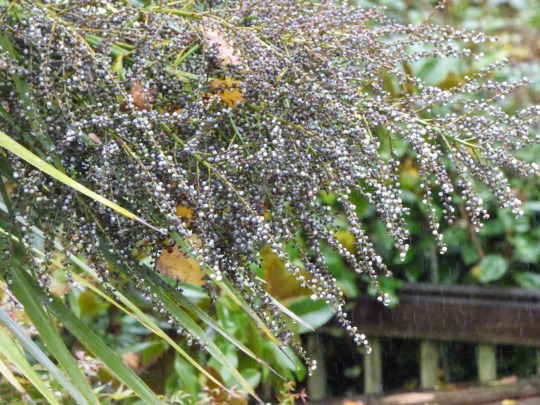
It’s so wet that the Christmas trees in particular are holding on to all the rain drops. Yesterday we were joking that they looked like they were laden with fairy lights. There was a bit of sunshine at times and the drops were shining either gold (for me) or green and blue (for OH) as we were in different places at the window. No sunshine now, so above is just the rain lashing down and the palm holding on to all the drops. All the trees are holding on to all the drops and I very much doubt the local reservoir is having any problems of late. Let me Look...
Oh, I’m wrong. As of 22nd it’s at 59% which seems loooooow, although it’s ranking second of four in the South East area. Weir Wood where we saw the Honey Buzzard is showing 91%. Quite a difference.
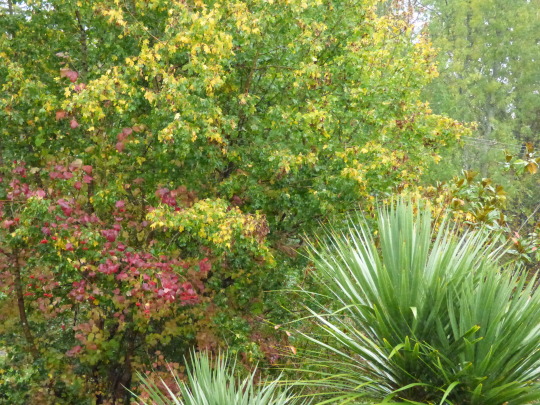
Going back to the window views, it struck me the outlook from one of ours is coordinating very well with the inside,

With the curtains and with the lamp

I bought this lamp years back on the sole basis that we both liked it when we saw it - we weren’t even lamp shopping. The colour goes with nothing else in the house really, until I looked out curtains from the last house and hey presto. Waste not, want not. I still love these curtains despite the fact you could call them vintage by now and I’d like to update but we’ve never really found anything we agree on that we like better, plus, they do a brilliant job of keeping light out of the room, which is my top priority. I always need double lined curtains for insulation and to hang properly. Curtains for me have to close the world out and when I go to sleep I really don’t want any disturbances (slight Diva alert there) Owls are accepted from this rule, however, as I always like hearing them and they make me smile.
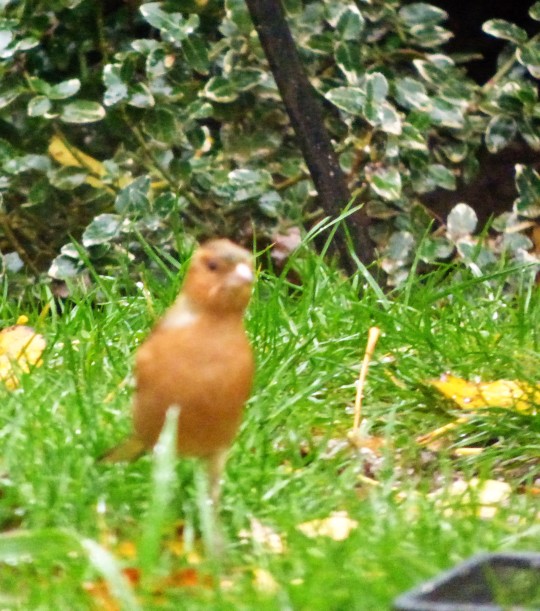
Now this photo is very poor. I didn’t get the little chap in focus but he demonstrates well enough what I mentioned yesterday. The Nuthatch breasts and bellies are much deeper than their usual pale buff and much more rust coloured. This Chaffinch, who spent a lot of time face on, skulking underneath the shrubbery,is indeed a Chaffinch and not the very elusive Bullfinch that I keep hoping to see. Of course it wouldn’t be a Bullfinch as I’ve never known one come to the feeders or into the shrubbery, but you know I’m always the optimist. I have applied a bit of filter to that photo just to replicate on screen the kind of hue I was seeing in real life. There were Chaffinch here today and the males just looked regular brownish and buff colours. Now I’m wondering if the colours aren’t suddenly intense and the birds have just been soaked wet through!
It reminds me of last week when I was hoping I’d seen a female Greenfinch at the feeders, but sadly she turned out to be a fairly unusual (markings wise) House Sparrow whose underneath had taken on a reflected greenish shade with the last knockings of the sun that day. That was a lesson learned, that there are standards for birds, but there are always variations to be aware of.
Now, I’m getting a fair few sightings lately which are causing me some consternation and debate, not least the below, which is the photo warned about at the beginning.
I consulted my Guru and Twitter friends as to what they thought had happened to this Stock Dove? I should say its eyes are bright and it came to feed and drink and it moved about OK, but it has a very large patch of feathers missing from its back. This picture isn’t the most graphic so don’t worry about that.
The consensus in the end was damage from an attack rather than disease and that all being well the feathers will grow back again without too much trouble. Fingers crossed.

To the kitchen...
COOK’S NOTE:
The other night we had a lovely chicken tagine, made in a le Creuset pot not an actual tagine, we don’t have one because we really don’t need one or have room to store one amongst our huge collection of kitchenalia.
The recipe comes from the book Tagine, spicy stews from Morocco, by Ghillie Basan and on page 33. It’s chicken tagine with preserved lemon, green olives and thyme. We used thighs and marinating them overnight meant they were really tender and succulent. Had it with cous cous and I kid you not, I could eat it all over again right now.
0 notes